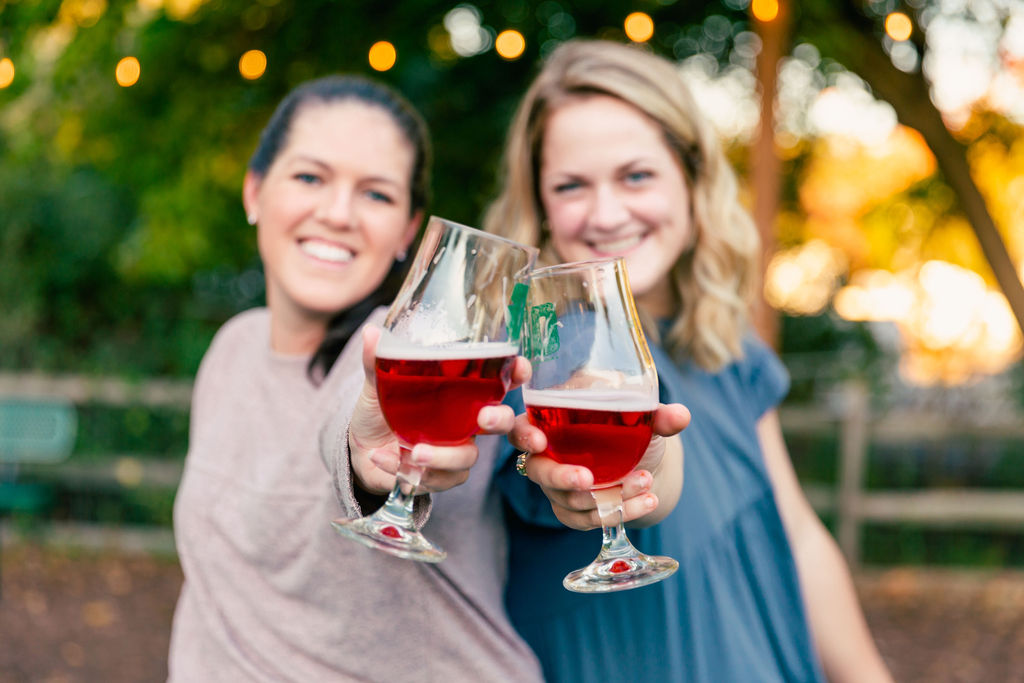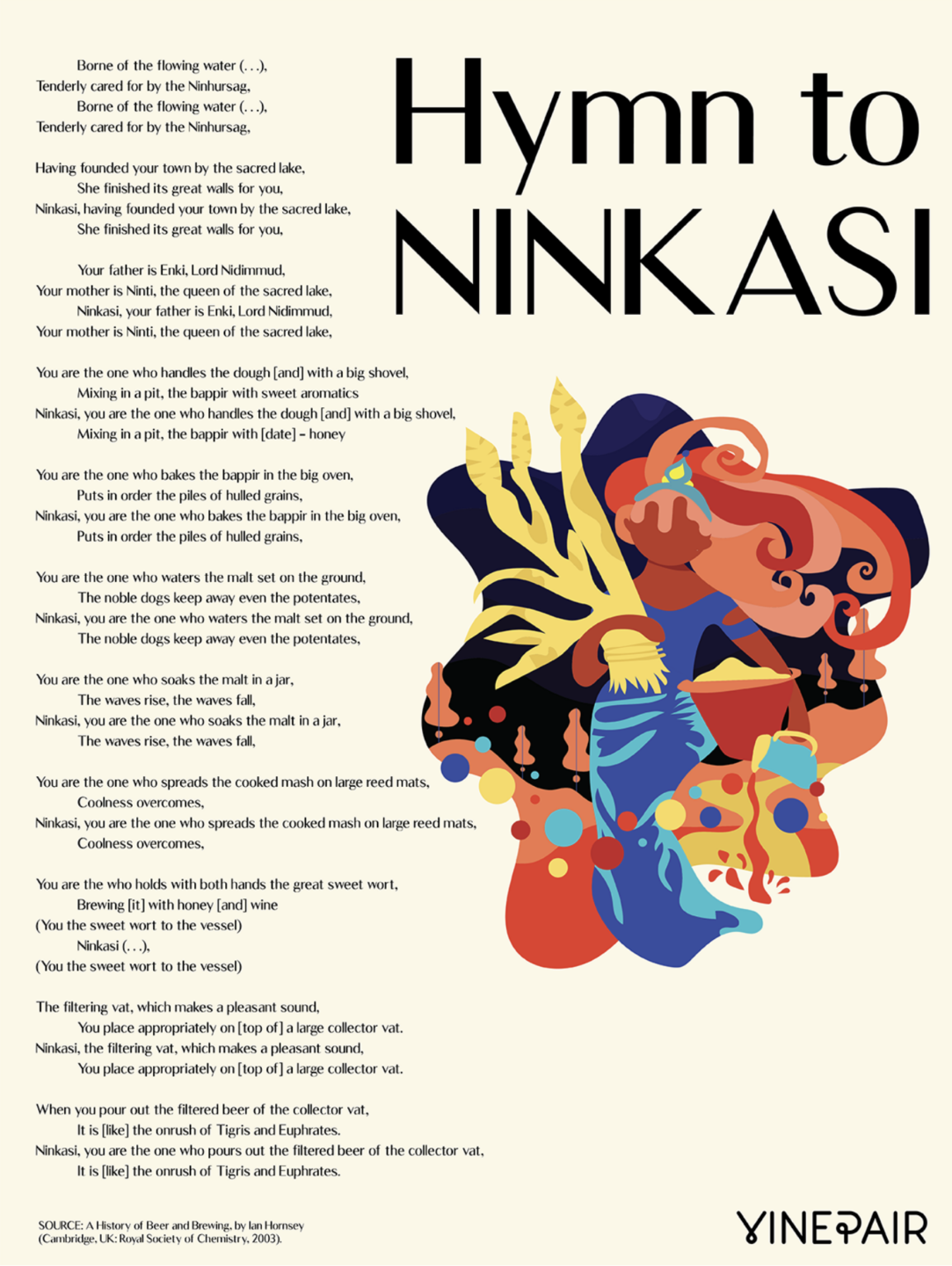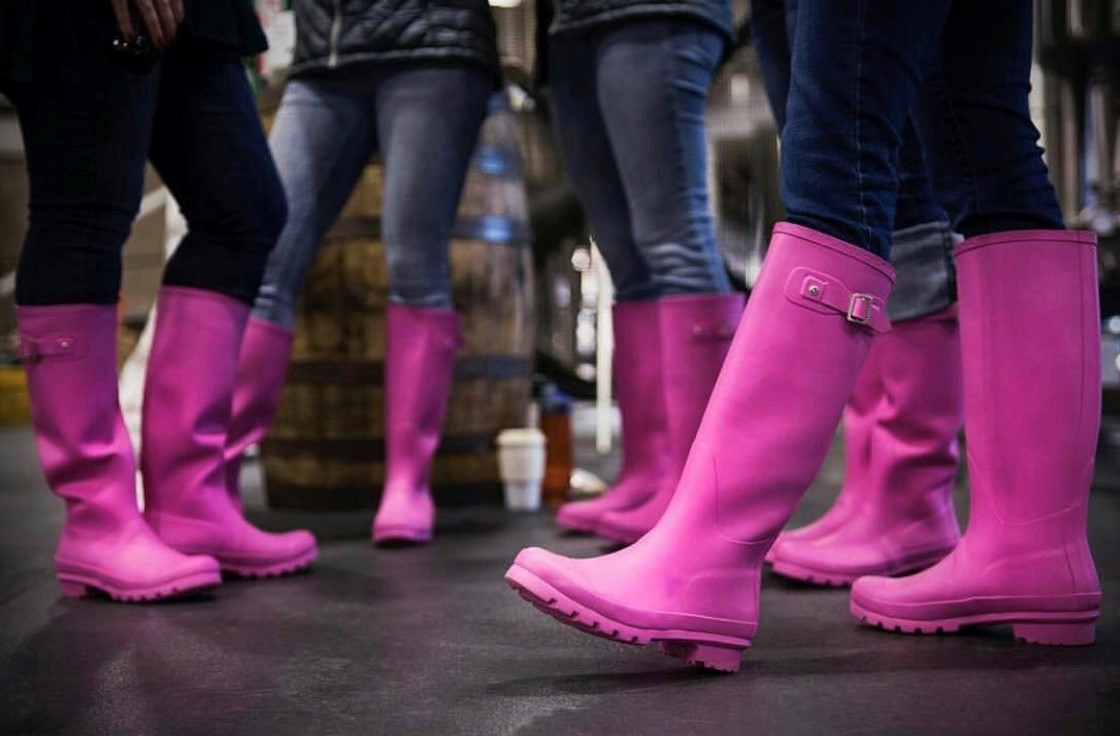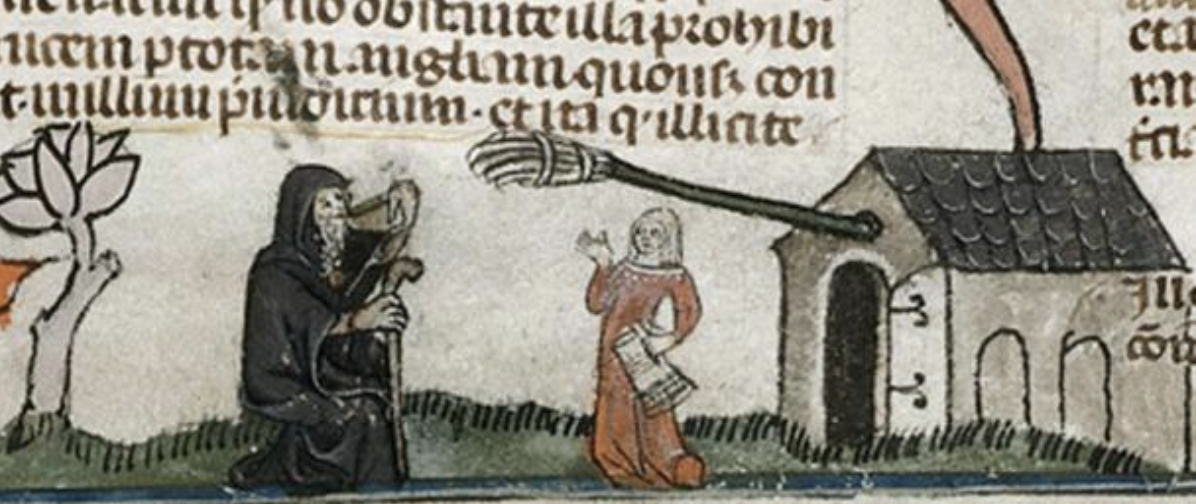Celebrating Women in Beer
In honor of Women’s History month, we’re recounting how brewing went from a woman-of-the-house’s chore to the male dominated industry that it is today.

Have you ever heard of the term brewster? It’s actually the feminine form of the word brewer, and was widely used prior to the 1700s to describe the women that produced beer both in their homes and respective businesses. The term, along with the women that mastered the skill of brewing before anyone else, has largely been wiped from history and our vernacular.
In honor of Women’s History month, we’re recounting how brewing went from a woman-of-the-house’s chore to the male dominated industry that it is today.
“[There are] three forces that have basically kicked women out of brewing and put men in, and those are religion, politics, and economics.” –Tara Nurin, beer and spirits contributor for Forbes
The Roots of Women in Beer
Now, we know that recent archeological evidence proves that the oldest industrial-scale brewery in the world was in Egypt, dating back to around 3150 B.C. But the earliest known written record of beer? That takes us back to Mesopotamia in 1800 B.C.
HYMN TO NINKASI
Women’s influence in beer is documented back to 4,000 years ago in the “fertile crescent” between the Tigris and Euphrates rivers. Along with being used for religious ceremonies, beer was known as a calorie-rich beverage that was inexpensive and helped preserve precious grains. Gender roles inherently made the task of brewing this important source of nutrients for families fall on women’s shoulders.
Sumerian women began to master the skill of brewing, and unmarried women even opened their own taverns to make money. As a patriarchal society, making beer was the only profession in Mesopotamia where people called on goddesses for protection and help.
Because of their faith and service to higher powers, Sumerian brewsters were highly respected in their society. Ninkasi was the revered Goddess of Beer in Mesopotamia, and Sumerians believe she was the head brewer among the gods and oversaw their own brewing processes. They wrote the Hymn to Ninkasi, both a beer recipe and a song, to show their appreciation and loyalty to her.

MORE BREWSTERS ARE BORN
According to archeologists, Sumerians and Babylonians introduced their Egyptian neighbors to the art of brewing beer. As it did in Mesopotamia, brewing fell on the women of the house. Egyptian hieroglyphics, sculptures, and other art forms primarily depict women during this time doing the brewing.
It’s said that Cleopatra, the last Pharaoh of Egypt, lost popularity among her people more so because of the tax she implemented on beer, than for her wars with Rome—which the taxes helped pay for.
In Europe, it’s much of the same story: European women brewed low-alcohol, nutrient-rich beer for their families, as it proved more sanitary than water. This is where history starts to see more entrepreneurial brewsters enter the scene, but there were obstacles in their way:
- Status and capital: At this time, married women didn’t have legal status, and unmarried women had very little capital, leaving them financially vulnerable and ill-equipped to access the technology and economic advancements that were transforming Europe into a commercial society.
- Religion: While German nunneries were known to provide shelter for budding brewsters and botanists, women wanting to brew outside of monastic walls were at the mercy of “feudal lords, the Church, or the emerging merchant class.”
- New laws: In 16th century Germany, the discovery of hops provided the ruling class leverage to outlaw “dangerous” beer additives that brewsters had relied on for centuries. They slapped higher price tags on hops and other resources, and European men reacted by building production facilities and forming trade guilds, leaving women out entirely.
What comes next is quite literally out of a scary movie.
BOO! WITCHES
During the Renaissance, brewsters were losing relevance and the respect they once held in society. The Reformation, which called for stricter gender norms and devout religious practices, sparked the idea for male brewers to condemn brewsters and claim that they were making potions instead of beer. Now it wasn’t just against societal norms to brew beer as a woman, it was also extremely dangerous. By some estimations, up to 200,000 women were persecuted as witches.
Brewsters had once inspired art that people worshiped, and this era flipped the script for them. Art and literature was largely negative for female brewers, and though it’s not confirmed, historians can’t help but point out the obvious similarities between brewsters and anti-witch propaganda.
When you picture a witch, does any of this sound familiar?
- Cats: Brewsters used felines to keep mice away
- Brooms: Brewsters hung brooms outside their doors to indicate available brews
- Pointy hats: Brewsters wore large, pointed hats so they could be easily found in a crowded marketplace
- Frothing cauldrons: Brewsters attended to their brewing concoctions in large vessels, much like cauldrons
By 1700, women in brewing ceased to exist outside the comfort and privacy of their own homes.
Beer in America
Brewing came to America in a mixed bag of forms. Europeans made their way over, of course, but a prominent portion of brewers were enslaved West Africans.
BEER > WATER
Yes, it’s said that beer was consumed more than water in early America, and people prioritized keeping a steady supply on hand at all times. Once again, women found themselves as housewives and tavern keepers, brewing day in and day out.
When Mary Lisle took over her dad’s brewhouse in Philadelphia in 1734, she became America’s first unofficial brewster. And while Peter Hemings was the unrecognized brewmaster of Monticello, Thomas Jefferson’s wife, Martha, was the one supervising all brewing at the estate.
But, alas, history repeats itself, and by the late 18th century men took over once again.
“When money got involved, men increasingly started brewing.” – Gregg Smith, author of Beer in America: The Early Years—1587-1840
A GROWING INDUSTRY
Two factors played a big part in what happens next: the discovery of yeast and German immigration. This meant “lagers, refrigeration, cheaper packaging, and rail delivery to an at-once expanding and consolidating full-scale brewing industry.”
Women weren’t welcome in the factories that were popping up, but “proper” women were invited to the family-friendly bier gardens that German culture brought about. However, leaders of the Temperance movement found their public imbibement “cavalier,” which led to…
PROHIBITION & AFTER
With beer brewing illegal during Prohibition, it gradually crept back into homes where women ran the roost. And even after Prohibition ended, the 60 years following were detrimental to the industry. Not only were women completely removed from the equation, so were homegrown taverns, replaced by “consolidated, industrial-scale brewing.”
What follows is likely why when we think “brewer,” we generally think of a bearded white man. With an increased belief in the 50s that women’s role was to be the homemaker, and marketers leaning on only images of burly white men in beer advertisements, beer was simply no longer an appropriate beverage or occupation for women.
Today: Looking Forward & Upward
These days, men continue to dominate the beer industry. In fact, the top 10 beer companies in the world are led by male CEOs and their board members are a majority male, too. The disparity also persists in craft, where men make up 76% of craft brewery owners.
But luckily, some brave, beer-savvy women are leading the charge to change that.

CHRISTINE JUMP
Christine Jump is the head of Barley’s Angels, a group that provides education, networking, and beer buddies for women in the industry. There are chapters in 26 states and 6 countries, making it the biggest women-only consortium that exists.
Jump is quick to emphasize the community Barley’s Angels create for female beer enthusiasts. In a world where we’re still served media that primarily involves men in the brewhouse, the Angels make being in beer less lonely for women homebrewers and the like.
TERI FAHRENDORF
Teri Fahrendorf has quite the list of accolades in craft brewing:
- Brewers Association 2014 Recognition Award Winner
- 8 Great American Beer Festival Medals from her own recipes (as well as 16 GABF medals won by Head Brewers that she trained!)
- Founder of Oregon Brewers Guild
- Founder of Pink Boots Society
If you’re not familiar, Pink Boots Society (PBS) is an organization designed to give education, inspiration, and assistance to women and non-binary individuals in craft. It all started on a cross country roadtrip in 2007, after Fahrendorf had spent 19 years as Brewmaster at Golden Gate Brewing Co. and then Steelhead Brewing Co.
Fahrendorf met Laura Ulrich at Stone Brewing Co. in California. They connect over how hard it is to find fellow female brewing professionals, and Fahrendorf decided to spend the rest of her roadtrip collecting names of women in the industry. When her trip was complete, she posted the 60 names online and named it Pink Boots Society after her own rose-colored brewer’s boots.
Nowadays, PBS has over 1,600 members in 15 countries. They offer scholarships to accredited brewing programs, and have met at every CBC and GABF since inception. Get connected via their Facebook page!
ANNIE JOHNSON
In 2013, Annie Johnson won Brewer of the Year from the American Homebrewers Association. She was the first woman to do so since 1983, and she was the first African American to ever win!
As a minority who’s also gay, Johnson uses her unique position to broaden the perceived image of homebrewers everywhere. She spent years working as a recipe developer and spokesperson for PicoBrew, and joined the ranks of Pink Boots to represent homebrewers at festivals nationwide.
Johnson is actively helping the AHA increase their diversity and writing delicious recipes like this coconut lime kolsch!
RACHEL KESLEY
Arryved’s very own Rachel Kesley is another prominent woman making waves in the beer industry. She’s a hospitality professional, having spent over a decade as an executive chef and helping run a Denver brewery. Now, she’s Arryved National Sales Manager, and continues to use her authentic leadership skills to build community—both within our team and for Arryved customers!
Rachel is also a fierce ally for the LGBTQ community and transgender folks. In her lifelong mission to make all people feel welcome and comfortable, she co-founded Transformative Freedom Fund, a nonprofit that supports transgender Coloradans by assisting with transition related healthcare costs.
THE LIST CONTINUES
There are simply too many modern day brewsters out there doing good work!
- Mellie Pullman: She helped launch Utah’s first brewery, Wasatch Brewery, and was the first female brewmaster in modern American history.
- Laura Ullrich: She was the first female brewer at Stone Brewing Co. and still brews up small batches there today! Ullrich also helped inspire and launch Pink Boots Society, and took over as President in 2016.
- Kristie Willis Nystedt: Nystedt was the first female in North Carolina to open a craft brewery: Raleigh Brewing Company. Now as president and CEO of Raleigh Brewing and also Atlantic Brew Supply, she’s helped make Raleigh the beer haven it is today.
- Megan Parisi: Parisi’s big break came from Cambridge Brewing Co., where she won 5 GABF medals. She’s now the brewer for Boston Beer Company, and brewed previously at Wormtown Brewery, Bluejacket, and Cambridge Brewing.
- Lisa White: After her aunt, cousin, and a team member had all been diagnosed with breast cancer, White found herself, among 4,000 others, walking the annual Susan G. Komen walk. She felt called to create a branch of White Labs dedicated to helping breast cancer survivors and their families. Beer for Boobs now collaborates with breweries and nonprofits to create beers and events that raise money for those fighting the disease.
- Carol Stoudt: Stoudt is considered one of the first female brewmasters in the US after founding Stoudts Brewing in 1987. She’s self-titled the Queen of Hops, and sat as one of the first female judges for the GABF.
- Betsy Lay: Betsy Lay is the Co-founder, Owner, and Brewmaster at Lady Justice Brewing Company, where the entire business model is built around supporting nonprofits that empower women and girls in Colorado.
If you’re interested in learning more, we recommend checking out Tara Nurin’s book A Woman’s Place Is in the Brewhouse: A Forgotten History of Alewives, Brewsters, Witches, and CEOs, which celebrates all of the contributions and influences women have had on brewing since the very start.
Happy Women’s History month to all the budding brewsters out there, and the ones that paved the way for them!

